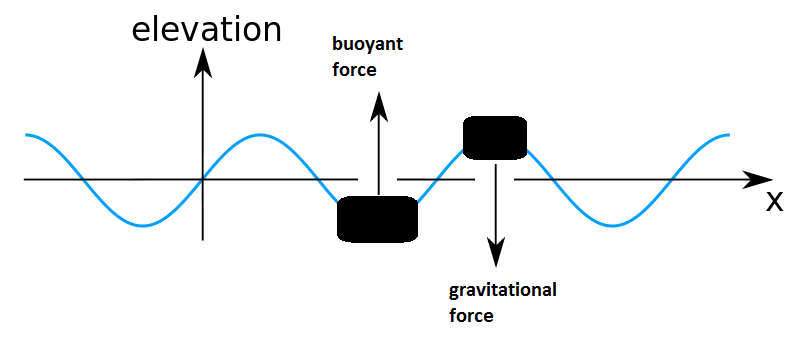Wave Physics
Ocean waves are also gravity waves, only generated at the interface between water and air. These waves have the highest amplitudes at the interface of the two media (air/water). Internal gravity waves, which are the ones discussed here, develop in a stably stratified atmosphere.
Internal gravity waves form when there is a force trying to restore the hydrostatic equilibrium of the atmosphere. This force can either be the gravitational force dragging an air parcel down towards the earth or buoyancy, which raises the air parcel due to density differences. These density differences are caused primarily by temperature differences between the air parcel and the surrounding air.
Figure 1: Top image: wave characteristics. © Kraaiennest, CC BY-SA 3.0; Bottom image: restoring forces
A stable atmosphere always tries to restore the state of equilibrium after being disturbed, but the state of equilibrium is not restored completely after such a disturbance. Instead the restorative force drags the air parcel back to the level of stability and beyond so that an opposing counter force starts to bring it back to equilibrium again. This process makes the air oscillate around the point of equilibrium after it has been disturbed.
Internal gravity waves will propagate over long distances until either the air becomes less stable or internal friction dissipates the wave energy.
The speed of internal gravity waves is given by:

where U is the current wind speed [m/s], H is the height of the corresponding homogenous atmosphere [m] and g the acceleration of gravity [m/s2].
The image loop (figure 2) shows a gravity wave roll over Tama, Iowa, seen from below. Its speed over ground depends on the speed of the background flow. Such atmospheric waves are very frequent but can only be observed in the presence of clouds.
Figure 2: A gravity wave rolls over Tama, Iowa, on 7 May, 2006. © Iowa Environmental Mesonet Webcam.

